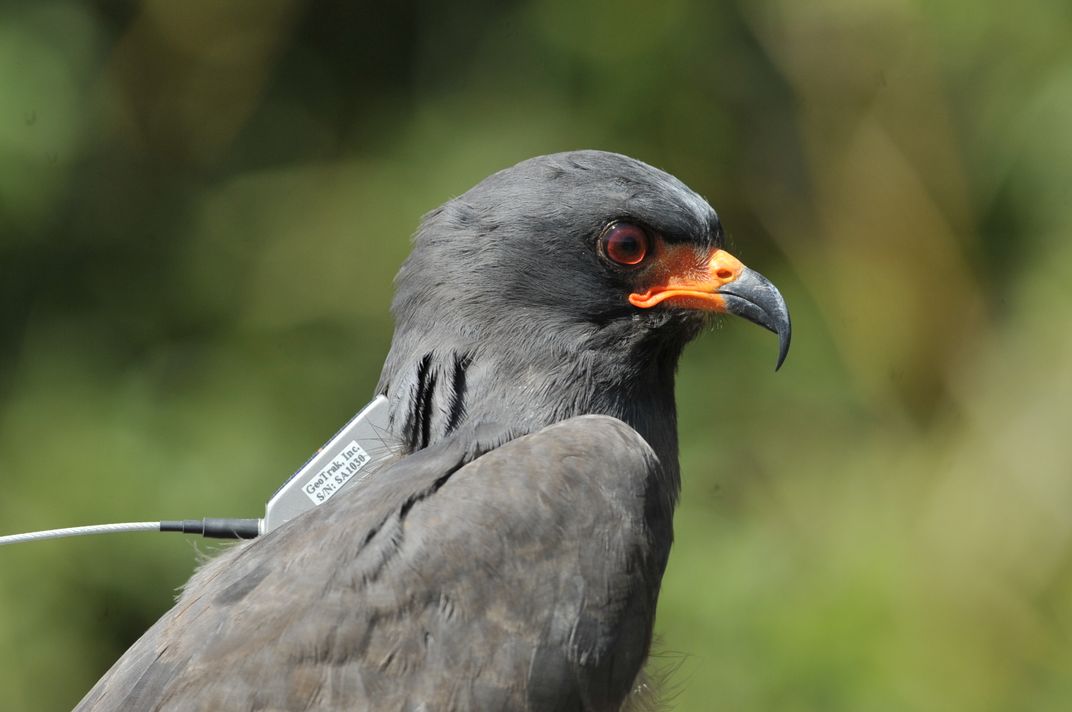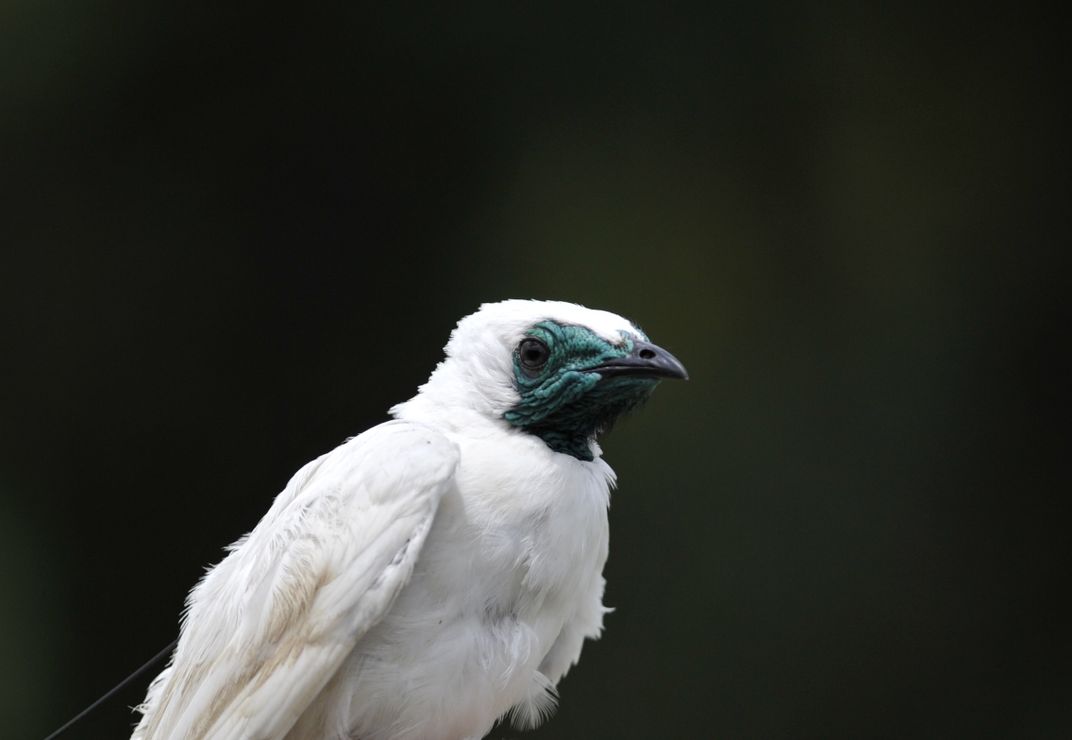The Next Frontier: Unraveling the Mysteries of Tropical Bird Migration
Scientists have started to notice that, like their counterparts breeding in temperate latitudes, tropical birds exhibit migratory behaviors. Now Peter Marra, director of the Smithsonian Conservation Biology Institute’s (SCBI) Migratory Bird Center, and Brandt Ryder, a research ecologist at SCBI are trying to understand why, by tracking two species of Neotropical birds in Brazil: Bare-throated bellbirds and Snail kites.
/https://tf-cmsv2-smithsonianmag-media.s3.amazonaws.com/blogging/featured/_MRG2076.JPG)
Nobody is surprised when birds in temperate latitudes move from their breeding grounds towards warmer weather in the tropics. Seasonal bird migration is a well-known and extensively studied phenomenon involving at least half of all species worldwide. It is a basic survival strategy: birds leave cold areas searching for food resources and more favorable conditions.
But what happens to birds breeding in the Neotropics, where there are no drastic seasonal changes in temperature? In the warm, lush, biodiverse habitats of South America one would imagine food is readily available throughout the year. These animals, it seems, have no reason to migrate. Yet they do, and it is fairly common, as scientists have started to discover. Now they want to understand why.
Peter Marra, director of the Smithsonian Conservation Biology Institute’s (SCBI) Migratory Bird Center, and Brandt Ryder, a research ecologist at SCBI are pioneers in the study of tropical bird migration. For the past year they have been satellite tracking two species of migratory Neotropical birds in Brazil whose migrations are still a mystery: Bare-throated bellbirds and Snail kites.
The bellbirds, a species critically threatened by habitat loss and the cage-bird trade, were tagged in the state of Rio Grande do Sul in Brazil last October and November. Snail kites, a bird of prey found between southern Florida and northern Argentina, were also tagged in Brazil between January and February 2018. The scientists are using miniaturized tracking devices that transmit the animals’ locations in real time as they move from their breeding to wintering grounds and back.
The data collected will help scientists unravel the mysteries of tropical bird migration.“In South America the study of migration is in a natural history phase. We know very little and so anything we learn is highly valuable,” explained Brandt Ryder.
This project is a component of the Smithsonian Movement of Life initiative, as part of the Conservation Commons. For the threatened bellbird in particular, conservation efforts rely on understanding when and where these animals go and what types of habitats they use after they leave their breeding grounds.
“These birds may have very different habitat needs during the non-breeding season than they do during the breeding season. Knowing when and where they spend their time can help us identify the threats they face to inform proactive conservation strategies,” said Ryder.
In addition to location, the tracking data will be combined with information about temperature and rainfall. The collection of environmental data can help scientists understand how weather and food might drive the migratory strategies of both species.
In the case of Snail kites, Ryder believes precipitation could be the main factor influencing its movements. Like its name suggests, the species feeds primarily on Apple snails, which in turn rely on persistent bodies of water.
“In the tropics, sometimes bodies of water can be highly dynamic in space and time, drying up and coming back during the rainy season. So Snail kites may be tracking the availability of permanent or semi-permanent water sources because it is essential for their primary food source,” explained Ryder.
However, preliminary data suggests that Snail kites’ migratory connectivity is weak. That is, they do not all migrate to the same wintering location after they leave their breeding site. Some of the tagged animals migrated all the way up to the mouth of the Amazon river, while others moved into neighboring Argentina, Bolivia or Paraguay. This could mean that additional factors play a role.
As for bellbirds, all the tagged species generally migrated north and remained along the coast.
These patterns may not be all that surprising given the rich biodiversity in the Neotropics. Scientists like Ryder and Marra expected to find a larger variety of migratory strategies than observed in temperate birds. Yet research is in its preliminary stages and there is still so much work to be done by future investigations.
“We started this program with the goal of understanding the diversity of migration strategies that exist in the tropics, and while our knowledge is at a nascent stage, this is the next frontier in ornithology and conservation,” concluded Ryder.
The Conservation Commons is an action network within the Smithsonian Institution (SI), highlighting the relevance of science and innovative interdisciplinary approaches across science and culture to on-the-ground conservation worldwide.



